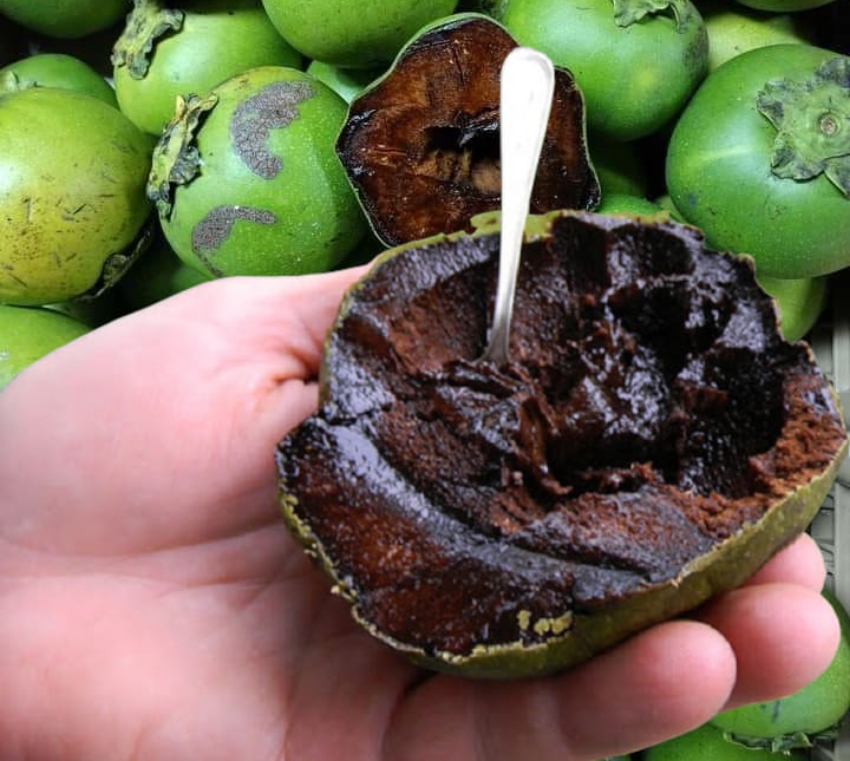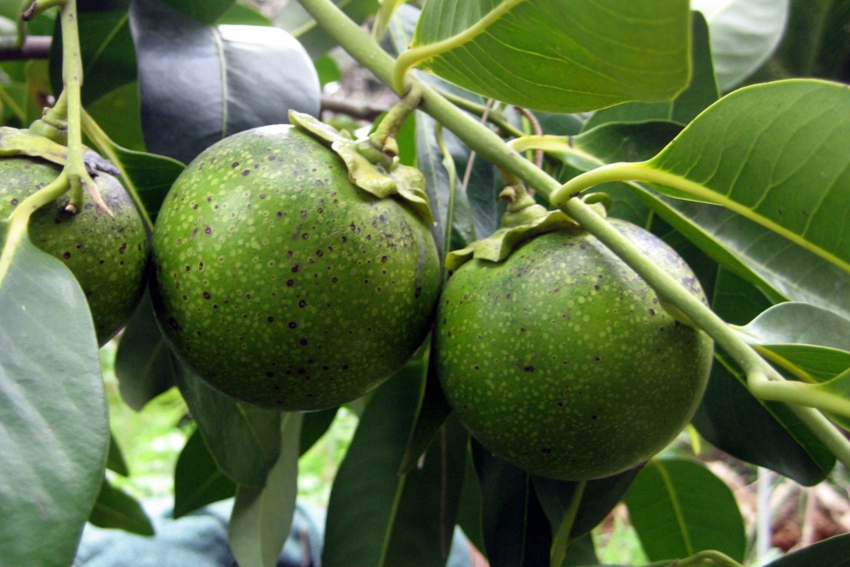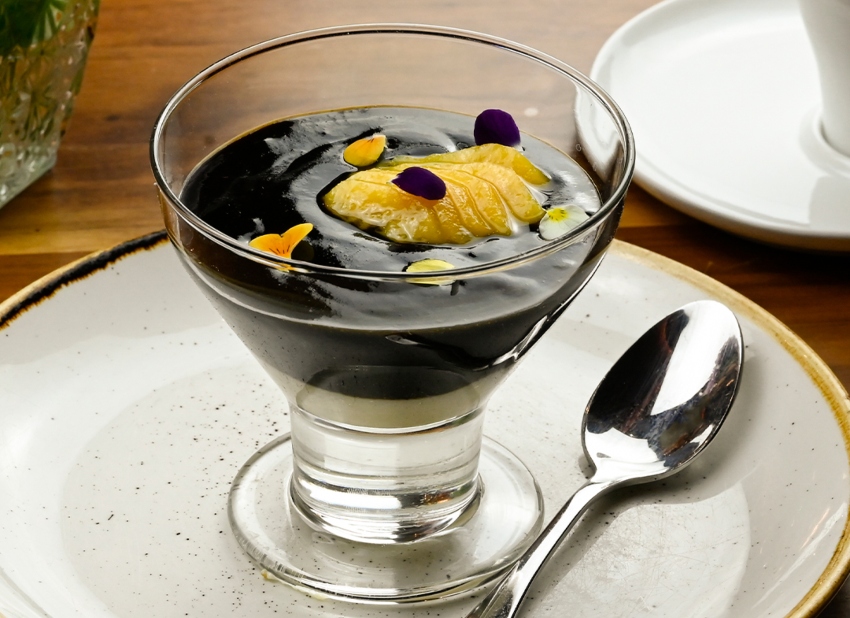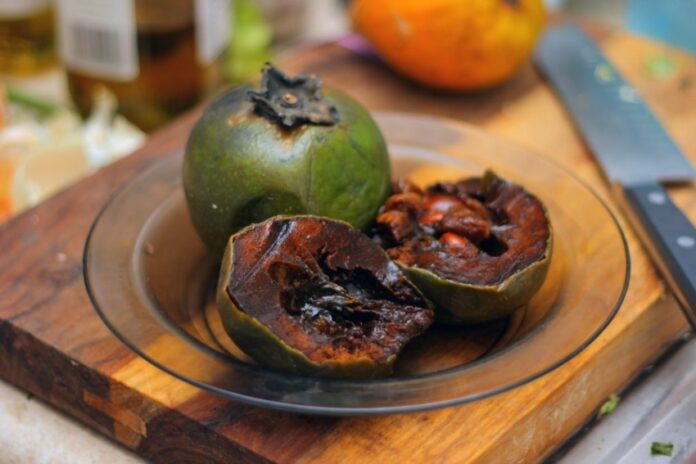There are flavors that define a childhood, and then there are those you spend most of your childhood avoiding. For me, that flavor was zapote negro with orange: a jet-black ice cream that, to my young mind, looked more like an oil spill than a treat. I remember the way my grandparents and parents smiled as they offered it to me, almost reverently. I was convinced they were lying. How could something so dark, so suspicious, be delicious, an iconic taste of Mexico?
I resisted for years. Then one day, I took a bite.

It was a quiet betrayal of my younger self. Sweet, smooth, and with a citrusy edge, it tasted like nothing I’d ever had — except perhaps the chili-laced lollipops I used to hoard. I’d wasted years in stubborn ignorance. Now, whenever I spot a black zapote at the market, I’m reminded of my mistake — and feel a tinge of shame. So allow me to save you the trouble: this strange-looking fruit is a Mexican treasure worth discovering.
Tliltzapotl
In the language of the Mexica, it was called tlilzapotl, or “black sweet fruit.” According to legend, it was a gift from Tzapotaletnan, fruit goddess. Eating it was not a ritual act — but it did carry a trace of the divine.
That sense of wonder still lingers today. The flesh of a ripe zapote negro is soft and custard-like, dark as ink, with a flavor that conjures comparisons to chocolate pudding or burnt caramel. It is deceptively delicious.
It was not only delicious, it was also a medicine. Pre-Hispanic cultures used zapote as a natural sedative, a laxative and even a remedy for skin and liver ailments. It soothed the body, calmed the nerves, and pleased the palate. The Maya, Zapotec, Totonac, Mixe, and Huastec peoples all cultivated it and gave it their own names. Their own stories. The fruit grew across a vast swath of Mesoamerica — from the coastal plains of Jalisco and Veracruz to the jungles of Chiapas and the Yucatán Peninsula. Even down to Colombia.
Zapote negro in colonial eyes
When Spanish friars like Bernardino de Sahagún encountered the fruit, their reaction seemed not unlike my childhood one. Surely, they must have thought, this was a mistake—rotten, perhaps, or simply unfit for European taste. While zapote negro was never really banned, like other Indigenous staples such as quelites, it remained largely on the margins. It was a food for Indigenous people and mestizos, but it rarely appeared on the tables of colonial elites.
Its flavor, its form, its rapid spoilage — it all made the fruit an outsider in its own land.
A crusade for black zapote

I’ve long believed in the quiet defense of native Mexican ingredients. I’ve asked you before to reconsider beans, to embrace quelites, to look at tortillas not as vessels, but as culture. And now, I find myself campaigning for the black zapote — a fruit once so familiar in my childhood that I hardly noticed it, and now so rare I have to Google it for my friends.
Its appearance works against it. The skin stays green even when ripe, and the flesh turns black. If you leave it too long, it grows melancholic and decays. It looks like something you should throw away. But bite into it at the right moment, and it will surprise you.
I don’t want this flavor to disappear.
One more reason
If I still haven’t convinced you to try this fruit, maybe its health benefits will. A whopping 21% of a single zapote is pure fiber. It’s packed with antioxidants and bursting with vitamins A, C and E.
Translation? It helps regulate blood sugar, supports your digestive system, and acts as a natural sedative for those nights when sleep won’t come. It’s wellness wrapped in dark pulp.
Traditional black zapote dessert
This is one of the simplest, most beloved ways to enjoy black zapote in Mexico. It’s halfway between a dessert and a soft embrace.

Ingredients
Preparation
View this post on Instagram
To the ancient world, it was sacred. To me, it’s a reminder of all the things I dismissed too soon. But to all of us, it can be a window into a more generous way of understanding Mexican food. It’s complex, contradictory, nourishing — just like the culture that birthed it.
María Meléndez is a Mexico City food blogger and influencer.
